Project Management Assignment: Role & Importance Of Project Manager In Unilever
Question
Task: You should base your project management assignmenton an organisation you work for, you know well personally or can effectively research. You are required to analyse actual business objectives, identify projects and then produce plans to achieve these objectives.
You will need access to detailed information about your chosen organisation including the business objectives and finances together with information about the sector in which the organisation operates. This can be web-researched by using an organisation’s annual reports, websites and other general industry information.
Scenario
You work for a management consultancy practice and have been asked to support internal staff in a client organisation, with project management activities.
Task 1 – Identifying the projects
You are required to research the organisation and identify potential projects that fit with the current business objectives and are feasible for the organisation. You should prepare a briefing paper on potential projects for a meeting with the senior management team at the organisation. Your briefing paper should:
• give a brief introduction to your chosen organisation identifying the type and size of business and industry sector
• analyse the objectives of the business
• identify at least two potential projects that emerge from the current objectives.
Task 2 – Project feasibility and methodologies
The senior managers of the organisation are interested in one of the projects you have recommended but want further information about the project to gain approval from the board of directors. You should write a report to the board of directors that:
• assesses the feasibility of the proposed project
• reviews project methodologies and identifies a suitable methodology for the chosen project
• describes the structure you have devised for the management of the project
• explains the role and responsibilities of the project manager.
Extension activities:
To gain a merit grade you must also:
• justify the methodology you have identified as suitable for the project
• evaluate the skills and experience needed by the project manager.
To gain a distinction grade you must also:
• analyse the contribution that the project will make in achieving the business objectives
• justify the chosen management structure and explain the contribution made by other team members.
Task 3 – Project plan
The organisation has decided to move forward with the project and requires a detailed project plan. You should prepare a project plan that:
• details the deliverables, accountabilities and responsibilities and gives a breakdown of work involved along with high level estimates of time, resources and costs to meet set milestones
Task 4 – Project controls
The board of directors have asked for a briefing paper on monitoring and controlling the progress of projects in general. In this document:
• identify the potential issues and risks associated with projects and how these can be managed
• design the systems and measures which can be used to monitor and appraise the status and progress of projects
• design contingency plans to mitigate against potential delays in projects
• assess the tasks required to close a project
• devise ways to review the success of a project.
Answer
Introduction
Project Manager has to perform various duties in the organization to ensure that the project is delivered on time (Darkazanli, 2021). In order to develop a deeper understanding, a project is prepared for the organization to identify the potential projects that are well-suited for the business short as well as long term objectives. Along with this, the report will also help in understanding what project management is and how different tasks are performed. A briefing paper of the potential project will be made to analyse the organization’s potential capabilities and weaknesses. The later part of the assignment will have project feasibility and methodologies that will help assess the feasibility of the proposed projects. Apart from this, the report will emphasize the project controls as well to see what are the potential threats and risks involved with the proposed projects and what are the steps that can be taken to manage them. The company chosen for the assessment is Unilever, which is a UK based Company.
Task 1
Identifying the project
Unilever is a United Kingdom-based multinational consumer goods which are based in London. The industry that it operates in is fast-moving consumer goods (Siddique and Sultana, 2018). The company dates back to 2nd September 1929 and was founded by four people named Antonius Johannes Jurgens, Lever Brothers, Samuel Van Den Bergh and George Schicht. The company was the result of the merger of operations of British soap maker Lever Brothers and Dutch Margin. The company was progressing stagnantly until 1930, after when it gained popularity.
Unilever deals with products from food, beverages and personal care. The company’s current operating income is $8.303 million as of last year’s data. Under Unilever, more than 400 brands are owned that have turnovers of 51 billion Euros. The company’s success is defined by its giant division into three sects that is Food and Refreshment, Home Care and Personal Care (Reza, 2020). The company is a multinational enterprise to have its operations in 190 countries. The company every year claims that, due to its products' success and advancements, more than 2.5 billion people use the product of Unilever daily and has an emerging market of 58% which is a huge number. The company has a remarkable network that is globally acknowledged in both home and foreign countries with retailers of more than 25 million.
The company aims to achieve huge success in the coming years and has an objective to help billion of people in the improvement of wellbeing and health conditions by developing products that are cost-effective and sustainable (Unilever, 2021). Two potential objectives that the company focuses upon is cost-effectiveness and sustainability that the company if considers could proliferate in the objectives of short- and long-term goals (Unilever UK, 2020). These two objectives are important for fast-moving consumer industry's companies as they deal with the direct consumption of the products and until and unless the quality of the products will be suitable for customers, they will not buy. However, the popularity of the products is based upon the quality Unilever has always prioritized and this is the reason it is immensely popular amongst its consumers. The two new projects consisting of the objectives will deal with the enhancement of cost-effectiveness and sustainability in a more comprehensive and organized manner. The cost incurred will be less because, after implementation of the sustainable project, there could be a possible reduction in cost by $1.5 Billion to $2 Billion because of the use of methods that will be eco-friendly and green.
Task 2
After proposing the project, the senior manager has decided to go with the sustainability project, the reason being the first one will complement the latter. If the emphasis is laid upon the sustainability objectives of the Company, chances are very high that the total cost will get reduced which will result in the reduction of the price of the final product.
• Feasibility of the Sustainable development project
In the changing world where all the countries of the world along with their respective companies are framing policies and objectives to participate in climate change, sustainability projects are vital for all companies(Gomaa, 2016).
Companies like Unilever that solely deals with fast-moving consumer products, the feasibility of the sustainable project is high because consumers will like the idea that products, they were till now purchasing will have no added chemicals in them further resulting in the favour of the environment. Feasibility of the sustainable projects comes from the fact that green manufacturing and sustainable production is known for the reduction in total cost because it does not employ substances that are harsh and toxic and on the top of it costly (Kahachi, 2017). Plastic and other non-renewable substances often add to the cost which is a waste of money in the long run and are also harmful when they get mixed up in the environment (Chawla et al., 2018). Apart from the reason stated, harmful wastes products that are emitted into the air along with the toxic by-products are all eliminated. Every big company should implement this project to ensure that outputs of the final production complement the environmental green projects that all the companies are encompassing (Keeys and Huemann, 2017). At last, the project on sustainability objective will support the well-being of individuals and communities by promoting a better economy. Therefore, investing in the project not only will protect and preserve natural resources and reduce the effect of climate change but also promote superior long-term financial performance.
• Project methodologies and suitable methods for the project
Project management methodologies consist of various sets of principles and practices that are needed for the proper organization of the project so that when it is finally implemented, it can ensure optimum performance.
Some of the project methodologies are reviewed to select the best possible one.
Waterfall Methodology: The method involves a traditional approach in which phases and tasks are finished linearly and sequentially (Casteren, 2017). The stages here include requirements, analysis, design, construction, testing and deployment and maintenance. The project management methodology is feasible when the end goal of the project is clearly defined and fixed for a lifetime. Furthermore, the stakeholders have a clear idea of what the project is all about and the results of the projects are predictable.
Agile Methodology: The methodology is contrary to the approach and is a result of the dissatisfaction that arose from the waterfall methodology as it was fixed and didn't support any change that may occur in the project. Agile project management works on three principles that are collaborative, fast and adaptable to any data-driven change (Peitl and Baptista, 2017). The particular product methodology is suitable only when there is any scope of the change of the project in future or the project managers are not sure what will be the result of the project.
Kanban Methodology: The methodology is ideal for giving a brief synopsis ofthe project and how it will perform in future. The project methodology is suitable when project managers are looking forward to the visual representation of the progress concerning the implemented new project.
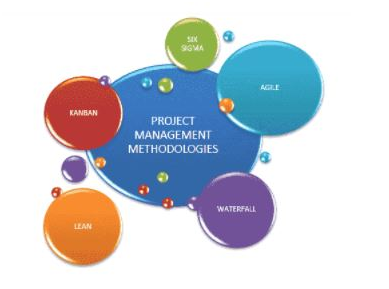
Figure 1: Project Methodologies
Source: (Eduinpro, 2019)
Selection of the best project methodology
After analysing different project methodologies, for the implementation of sustainable projects that keep changing, an agile methodology will prove best because sustainability is flexible and according to the need and want, the company can upgrade the policy and framework to align it with the contemporary demand. Fast-moving consumer goods generally go by the consumers' demand which never remains stagnant or in one direction. Market fluctuate according to the consumers' purchasing habits and behaviour change and hence, given the situation, and possibilities of change, agile methodology fits the best.
• Structure for the management project
The chosen methodology is Agile project methodology, and the structure for the implementation of the project is as follows:
Plan: On the initial level, ideation will pave way for a comprehensive and achievable plan that will have two components; what and who of a project. The plan will include every possible detail related to its different stages and timelines, milestones, metrics and deliverables. Furthermore, it will also state the opportunities and risks that Unilever may face in both the short and long term while implementing the sustainable project. At last, the project plan will also have details of all the stakeholders and other considerations like budget and scope.
Create: After the plan has been made, now is the time to create a layout in actual of how all these things will be assembled for the real implementation. All the probable areas have to be covered that will help in the implementation of the projects. Areas, no different than what is stated in the plan can be taken for the initial implementation and later modified if the need arises.
Review: A review is an exercise that is taken at the last of the project phase in order to assess the present status of the project and what is its performance. The project review determines everything essential that needs to be delivered for a project to meet its set objectives.
Release: Release forms a group or series of changes that is based on defined features of the future changes. It comprises everything from planning to communication and deployment, which is the end stage of the project management.
Final Outcome: Outcomes are specific measurements that define the result of the implemented project. Either a project performs satisfactorily or is not up to the mark. Outcomes give an idea that the project needs to be worked upon or there is no need for revision.
• Roles and responsibilities of the product manager
A person in the organization is responsible for activities related to the project, right from its planning to the completion is known as a project manager. In an organization, a project manager plays a huge role as the entire project depends upon his supervision which if not done right, may not bear effective results in future. Project managers take charge of the projects from their initial stage and curate them in a way that suits the idea and objectives of the organization.
Some of the responsibilities that also signifies the roles played by a project manager are as follows: Planning and Development of the idea behind the project:The idea is the base of the project and it's the job of the project manager to describe the project concept to all the stakeholders. Activities like
Creation of an effective and efficient team:A project manager cannot handle the work pressure alone hence, constructs a team that assists him in different areas. Project managers should be capable enough to build a team that is flexible and enthusiastic. A good team ensures timely deliverables meeting the clients' expectations and deadlines (Soni, 2020). Monitoring of the project and follow up on the deadlines: Project managers, after creating the projects take note of the progressions in future and performances of it.
Ensure stakeholders’ satisfaction:Project managers ensure a smooth flow of communication to avoid any verbal or non-verbal barriers during the implementation of the project and update or revise according to the need of the client. Evaluation of the performance: On the completion of the project and implementation, one thing that remains crucial is its evaluation. Evaluation helps in the determination of project effectiveness and efficiency. Project managers evaluate projects' performance which gives them opportunities to highlight the loopholes and weaknesses.
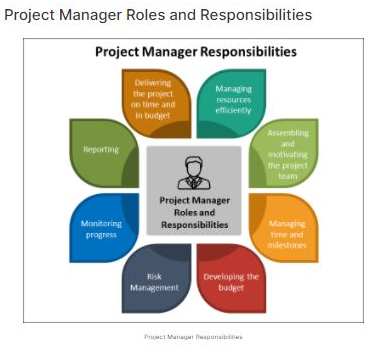
Figure 2: Responsibilities of a Project Manager
Source: (Santoshi, 2020)
Task 3
Project Plan
Project name: The name of the project is "Unilever Sustainability 2022". The reason for this name is because the emphasis is laid solely upon sustainability and how the products of the company can be made sustainable in the long run.
Deliverable:The deliverables of this project should be based upon the ability to meet requirements, future maintenance and can cope with the changing environment. The deliverables will include optimization of the resources and raw material, elimination of the waste, energy conservation and produce products that are organic with zero added chemicals.
Accountabilities: Social and ecological impacts will be covered in the accountability of this project (Tesfaye et al., 2017).
Responsibilities:Conservation of environmental, economic and social are the responsibilities of the project for the company.
Time:Due to the pandemic and closures of borders at many places, the project may take more than two years as most resources in time may not be possible.
Resources: Majorly, the resources will be dependent upon renewable resources as it is a sustainability project.
The cost involved: The cost that will be borne by the company will initially be somewhere around 1 million depending upon the duration of the project and elasticity.
Task 4
Project Controls
• Potential issues and risks involved with the project and ways to overcome them
Potential risks
Sustainability projects are subjected to risks at almost all levels as they are constantly exposed to practices that negatively leave a bad impact on the environment (Asadi, 2015). The projects are designed in a manner to combat the issues in the environment hence, this may not be favourable to many parties.
Some of the evident risks and solutions are as follows:
Climate Risk: Sustainability projects require a lot of time and patients but, the environment and weather may not always remain favourable for the project managers to carry out all the works smoothly.
Solution:The rainy season is considered to be the most difficult season to go ahead with any projects related to sustainability as there are risks of electricity failures that are needed for the majority of the tasks. Rain is distributed fairly well throughout the year in the United Kingdom and given the fact, it might pose serious concern on the project. Therefore, projects can be performed in the dry season.
Technology Risk:Technology is a key facilitator in any project management especially the ones related to sustainability. However, if by any means in the long run, if there is a technology failure, there might be risks related to wastes of resources, poor infrastructure, low production, deteriorated quality of the manufactured products and failures to meet the deadlines. Solution: A complete backup of all the product databases in software can be kept. Cost Risk:Cost risk in sustainability projects may arise if the project incurs costs more than the pre-decided budget (Eaton, Dikmen and Akbiyikli, 2016).
Solution:Cost risk can be managed by adding margins to the price of the subcontractor before proceeding ahead with different tasks in the projects.
Skill and Resources Risks:In order to go ahead with the project, a certain level of skills will be needed which may not be adopted by all the workforce at the same period. Moreover, there may arise circumstances when adequate resources are not available. Therefore, Unilever will have to be prepared to face these two conditions in the long term. Solution: Proper training shall be imparted to all the workers. Resources can be pre-booked weeks before, to not fall short at the time of the commencement of the task.
Performance Risks: Performance risks occur when the projects underperform or do not bear effective results in future. The benefits outlined in the projects are made considering the specification and feasibility of a project but, it may not always outperform or even bear effective results.
Solution: Performance risk could be overcome by pre identifying potential risks that could adversely impact the project.
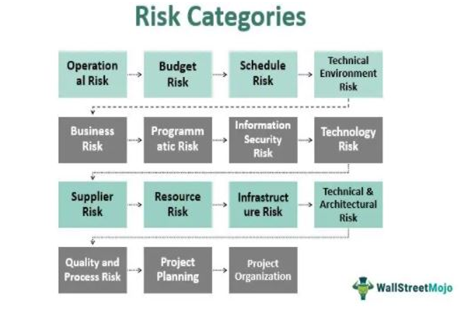
Figure 3: Types of Risks
Sources: (Mojo, 2020)
• System design and measures used to appraise the status of the project
System designs and methods are as follows:
Economic Analysis: Under this aspect of projects are highlighted such as all four factors of production and to what extent will it prove profitable. Apart from this, the required amount of sales to achieve the targeted profit is also determined.
Financial Analysis:One of the most important prerequisites of sustainability projects are finances therefore, it should be kept in mind that the project should generate sufficient finance to safeguard the interests of all the stakeholders.
Market Analysis: Although sustainability projects have a large market and accepting consumers still there has to be a thorough analysis of the dynamic nature of it before starting the production.
• A contingency plan to mitigate potential delays in the project
The steps involved in the contingency plan is as follows:
Realistic goals:The goals set for the projects should have clarity, realism and measures in them. Sustainability projects have all three factors.
Conduct team meetings: Timely meetings will be conducted to initiate, inform and educate all the members about the latest happenings about the project and the objectives. Key milestones will be highlighted to explain the benchmarks the project holds.
Gathering the right resources:Proper evaluation of all the resources will be made so that everything is placed in the right place.
Schedule Carefully:Individual tasks and activities related to the project will be divided into phases to determine sequential activities, discrepancies and time for it to be completed.
Track measure progress:Progress of the project can be determined by data collected from various resources from both internal and external stakeholders (F. Heimann, 2019).
Forecast:After the project is 25% completed, forecasting will be done to determine how well the project is performing or is there any need for revisions.
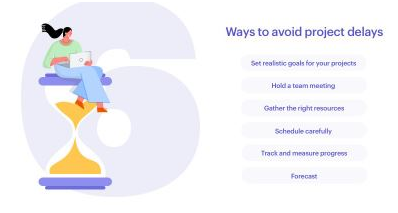
Figure 4: Ways to avoid project delays
Source: (Project, 2020)
• Tasks required to close a project
Some of the tasks are as follows:
Transferring of all the deliverables formally:All the deliverables shall be timely met and made to all the clients at the time of the closure of the project.
Confirm project completion: Stakeholders shall be informed at a priority of the completion of the project as the final approval will be given by them as feedback.
Reviewing of all contracts and documents:After receiving approval from clients, the next step is to wind up all previous contracts and liabilities. Payment to all parties shall be made and there should be no outstanding invoices. Release resources:The last obligation that remains is the release of the project after all the other tasks have been fulfilled. All the scores should be settled and associated parties should be given the liberty to work on other projects from now.
Conclusion
The report on project management and how it works has facilitated with relevant knowledge one needs to understand what the profession of Project Manager is all about. Tasks of a Project Manager is not easy as it requires a thorough understanding of all levels and activities involved in the project management. New Projects are known as a stepping stone required for any organisation to learn advanced things and adopt the latest changes for future proliferation. Even though a project fails, it always does some value addition in the organization. Similarly, to facilitate the smooth flow of the project, good project management is important and plays a pivotal role in strategizing the base of the project.
Reference list
A. Keeys, L. and Huemann, M. (2017). Organizational Project Management and Sustainable Development (SD): Managing the Interface of Organization and Project SD Benefits. Cambridge Handbook of Organizational Project Management, [online] pp.326–343. Available at: https://www.researchgate.net/publication/325844575_Organizational_project_management_and_sustainable_
development_SD_Managing_the_interface_of_organization_and_project_SD_benefits [Accessed 9 Oct. 2021].
Asadi, Z. (2015). An investigation of risk management strategies in projects. [online] ResearchGate. Available at:
https://www.researchgate.net/publication/307849736_An_investigation_of_risk_management_strategies_in_projects [Accessed 9 Oct. 2021].
Bin Siddique, F. and Sultana, I. (2018). Unilever Sustainable Living Plan: A Critical Analysis. [online] ResearchGate. Available at: https://www.researchgate.net/publication/324877389_Unilever_Sustainable_Living_Plan_A_Critical_Analysis [Accessed 9 Oct. 2021].
Chawla, V.K., Chanda, A.K., Angra, S. and Chawla, G.R. (2018). The sustainable project management: A review and future possibilities. Journal of Project Management, [online] pp.157–170. Available at: https://www.researchgate.net/publication/323864422_The_sustainable_project_management_A_review_
and_future_possibilities [Accessed 9 Oct. 2021].
Christina Peitl, K. and Márcio de Oliveira Baptista, C. (2017). Agile Methodology: Benefits and Barriers on Its Initial Application. SAE Technical Paper Series. [online] Available at: https://www.researchgate.net/publication/322361592_Agile_Methodology_Benefits_and_Barriers_on_Its_ Initial_Application [Accessed 9 Oct. 2021].
Darkazanli, W. (2021). The Project Manager Role: Management or Managing [online] ResearchGate. Available at: https://www.researchgate.net/publication/349522108_The_Project_Manager_Role_Management_or_Managing [Accessed 9 Oct. 2021]. DineshkumarSoni, V. (2020). Importance and Strategic Planning of Team Management. [online] ResearchGate. Available at: https://www.researchgate.net/publication/342571600_Importance_and_Strategic_Planning_of_Team_Management [Accessed 9 Oct. 2021]. Eaton, D., UmitDikmen, S. and Akbiyikli, R. (2016). Controlling the cost of risk management by utilising a phase portrait methodology. Transport, [online] 33(2), pp.315–321. Available at: https://www.researchgate.net/publication/302978671_Controlling_the_cost_of_risk_management_by_utilising_a_phase_portrait_methodology [Accessed 9 Oct. 2021]. Eduinpro (2019). Project Management Methods and Product development Frameworks. [online] EduinPro. Available at: https://eduinpro.com/blog/project-management-methods-and-product-development-frameworks/ [Accessed 9 Oct. 2021].
F. Heimann, J. (2019). Contingency planning as a necessity - risk assessment process. [online] Pmi.org. Available at: https://www.pmi.org/learning/library/contingency-planning-necessity-risk-assessment-8898 [Accessed 9 Oct. 2021]. Gomaa, A. (2016). Feasibility of Environmentally Sustainable Buildings in State of Qatar. Project management assignmentCivil Engineering and Architecture, [online] 4(1), pp.29–37. Available at: https://www.researchgate.net/publication/301915008_Feasibility_of_Environmentally_Sustainable_Buildings_in_State_of_Qatar [Accessed 9 Oct. 2021]. Hossain Reza, M. (2020). Marketing Strategy and Sustainable Plan of Unilever. [online] ResearchGate. Available at: https://www.researchgate.net/publication/343539636_Marketing_Strategy_and_Sustainable_Plan_of_Unilever [Accessed 9 Oct. 2021]. Kahachi, H. (2017). Sustainability and Project Management: The drivers and benefits. [online] ResearchGate. Available at: https://www.researchgate.net/publication/320741031_Sustainability_and_Project_Management_The_drivers_and_benefits [Accessed 9 Oct. 2021].
Project (2020). How to Avoid and Overcome Project Delays | Kissflow Project. [online] Project. Available at: https://kissflow.com/project/how-to-avoid-project-delays/ [Accessed 9 Oct. 2021]. Santoshi (2020). Which Of The Following Is A Direct Responsibility Of The Project Manager [online] Project Management Templates. Available at: https://www.techno-pm.com/2020/03/which-of-the-following-is-a-direct-responsibility-of-the-project-manager.html [Accessed 9 Oct. 2021].
Tesfaye, E., Lemma, T., Berhan, E. and Beshah, B. (2017). Key project planning processes affecting project success. [online] ResearchGate. Available at: https://www.researchgate.net/publication/315575498_Key_project_planning_processes_affecting_project_success [Accessed 9 Oct. 2021]. Unilever (2021). Strategy and Goals. [online] Unilever. Available at: https://www.unilever.com/planet-and-society/climate-action/strategy-and-goals/ [Accessed 9 Oct. 2021].
Unilever UK (2020). Unilever celebrates 10 years of the Sustainable Living Plan. [online] Unilever global company website. Available at: https://www.unilever.com/news/press-releases/2020/unilever-celebrates-10-years-of-the-sustainable-living-plan.html [Accessed 9 Oct. 2021].
Van Casteren, W. (2017). The Waterfall Model and the Agile Methodologies : A comparison by project characteristics. [online] ResearchGate. Available at: https://www.researchgate.net/publication/313768756_The_Waterfall_Model_and_the_Agile_Methodologies_ A_comparison_by_project_characteristics [Accessed 9 Oct. 2021]. Wall Street Mojo (2020). Risk Categories (Definition) | Overview of Top 15 Risk Categories. [online] WallStreetMojo. Available at: https://www.wallstreetmojo.com/risk-categories/ [Accessed 9 Oct. 2021].
Appendix
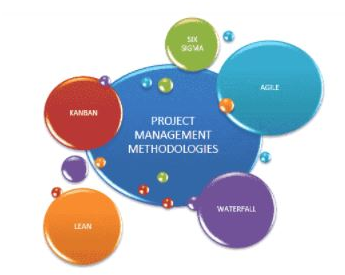
Figure 1
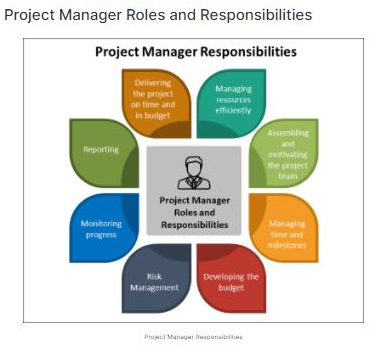
Figure 2
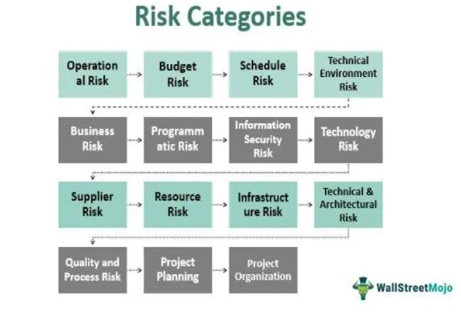
Figure 3
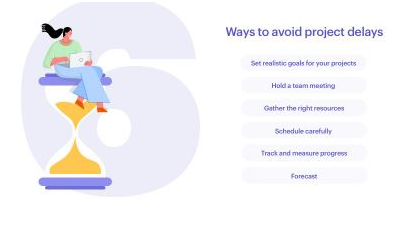
Figure 4












